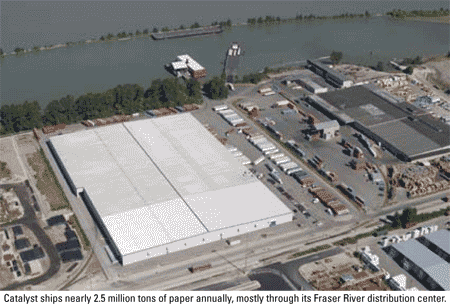
BREAKBULK QUARTERLY - Following the paper trail
By Leo Quigley, AJOTCatalyst Paper, located on British Columbia’s Fraser River, is one of the province’s largest breakbulk operations, receiving paper from four locations within the province and shipping to roughly 300 cities worldwide.
The company produces and distributes paper for businesses such as newspaper publishing firms, magazine publishers and telephone book production houses on the US West Coast, Canada, Europe and Asia.





